Day 2 of a 3-day Early Winter Tour today. It was a grey, wet and windy start, but thankfully it dried out quickly and then even brightened up from the middle of the day. The forecast suggested it would be much worse (again!).
As we met at the B&B in Hindolveston this morning, a Fieldfare flew over tchacking. Possibly another fresh arrival from the continent overnight.
Our first destination for the day was Sheringham. As we pulled up on the edge of Beeston Common, it was very grey, low cloud, windy and spitting with drizzle. It didn’t look too promising. But we looked up into the trees opposite and the first bird we saw perched right up in the top of one of them was a Waxwing! We got it in the scope, a super smart bird to start the day. After a few minutes it flew a short distance out onto the Common and disappeared out of view.
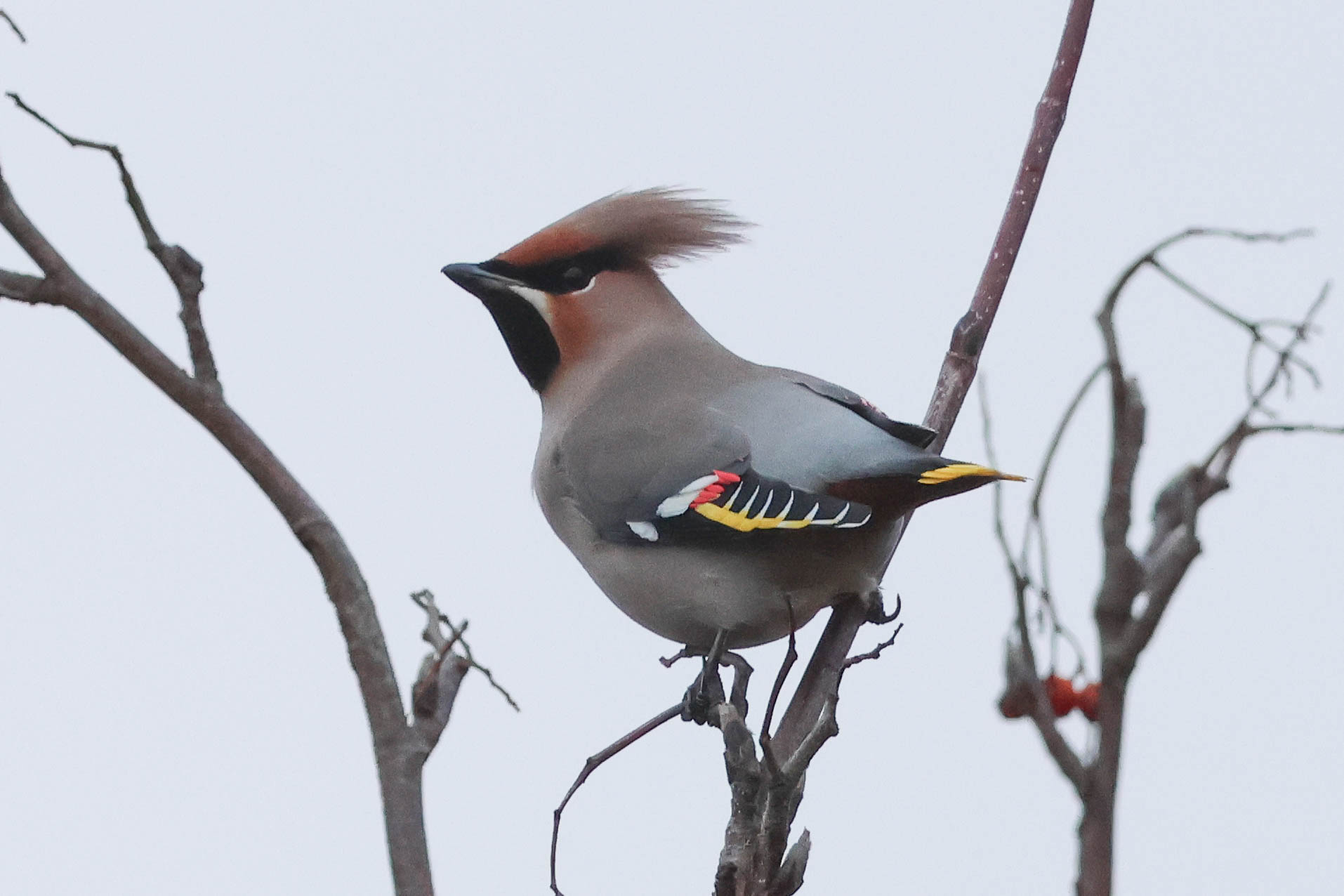
There had been 10 Waxwings here yesterday, so we walked up the road and round onto the Common to see if we could find any more. There were lots of rowan trees here and lots of berries – always promising! A Bullfinch flew across. And there were nine Waxwings lined up in the top of one of the trees. Enough to brighten any morning!
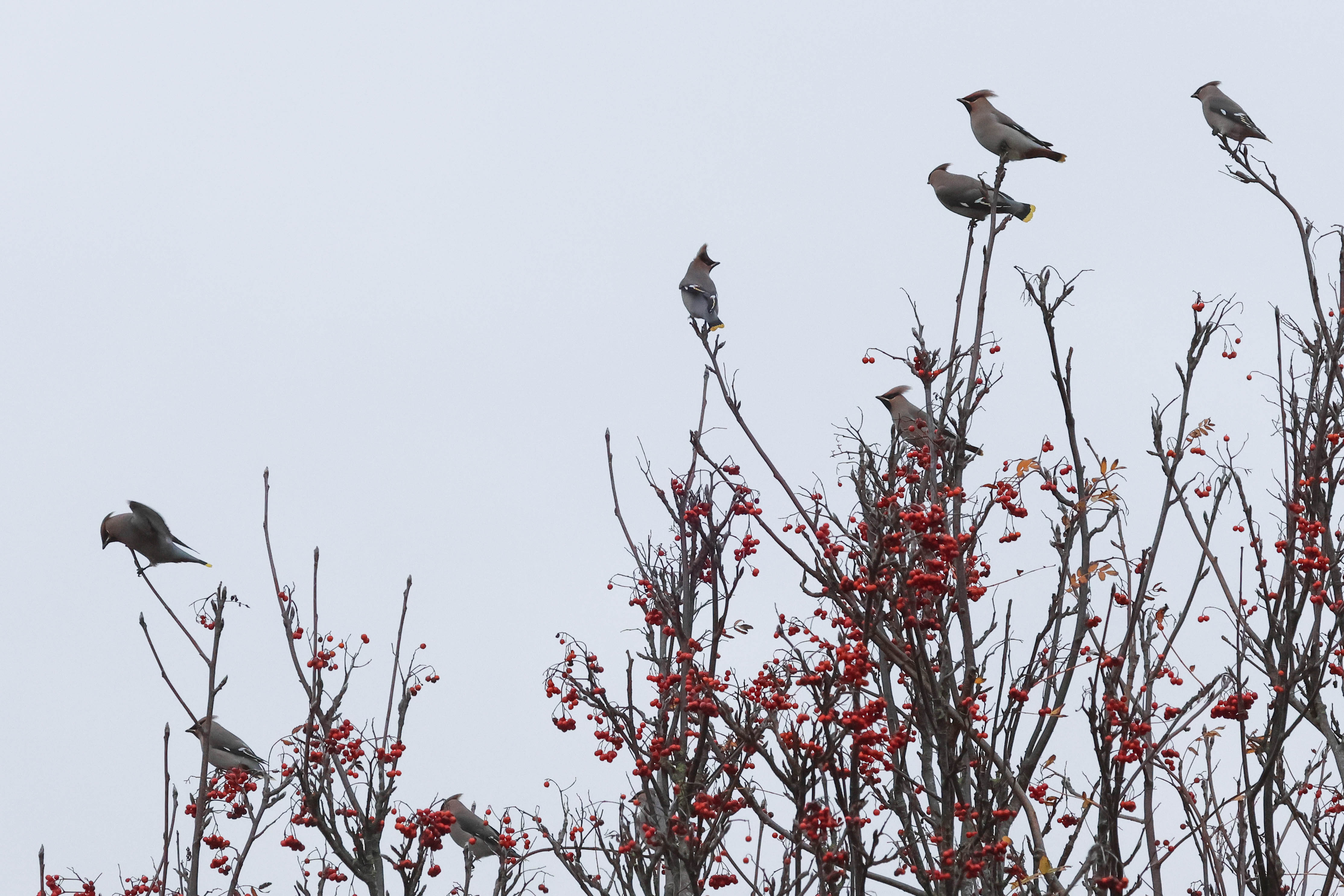
We watched the Waxwings for a while. They were rather jumpy, and kept flying round and landing again back in the same couple of rowans. We could see a mixture of adults with brightly marked wings and duller 1st winters.
After a while, it started to rain more heavily and the Waxwings flew back towards where we had first seen the lone one. Having enjoyed such good views, we decided to move on.
We made our way down to the promenade next. Several Turnstones scooted off ahead of us as we walked along to the Tank. We stopped in the lee to scan, out of the wind, and immediately spotted a Purple Sandpiper on the next groyne up. It seemed to be mostly down out of sight on the far side of the rocks, so we walked further along for a clearer view. Several Turnstones flew in to the same groyne and when we got to where we could see the rocks we found that there were actually two Purple Sandpipers together.
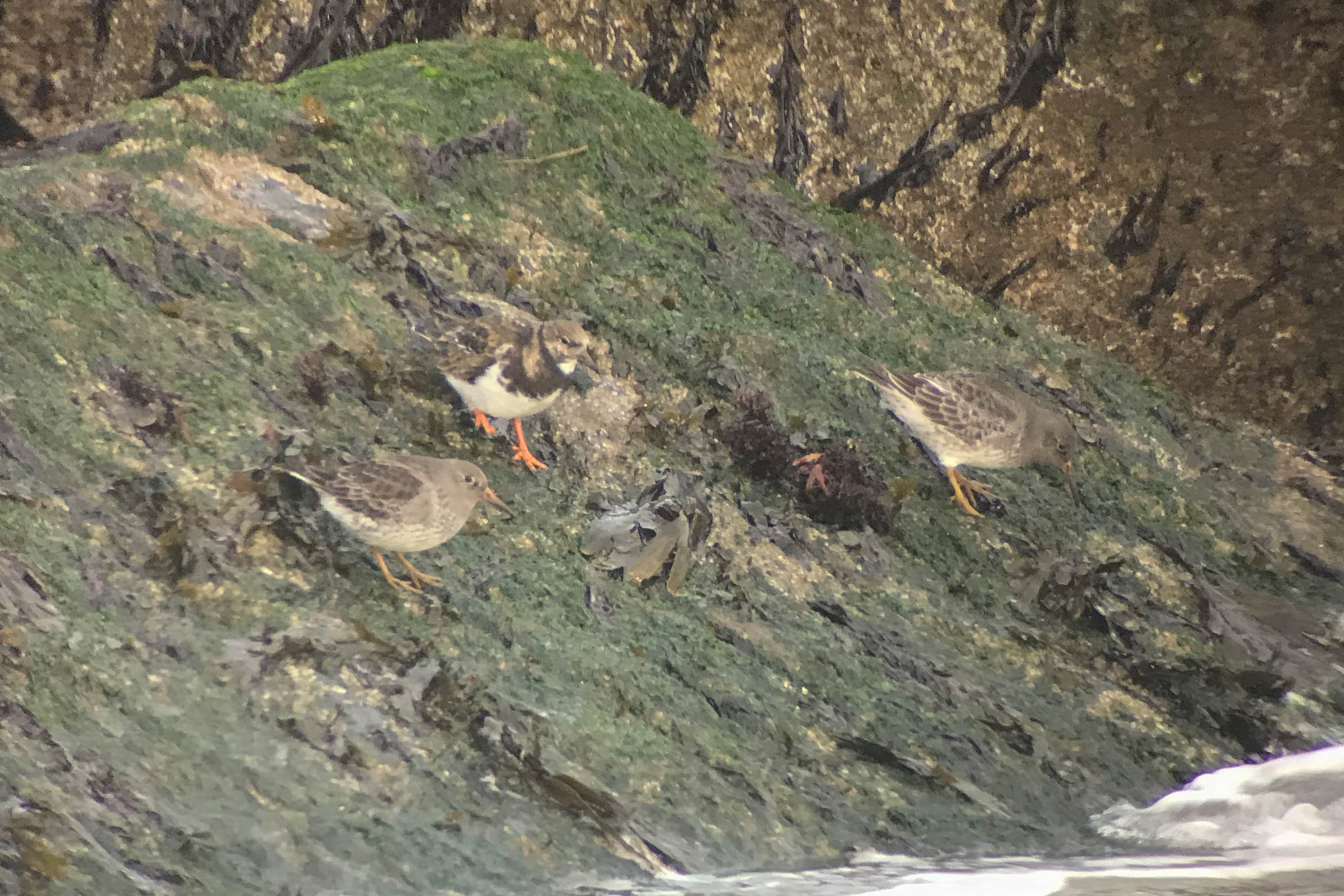
It was windy out on the prom, so we made our way back to the lee of the Tank to scan the sea. There were lots of auks moving offshore this morning – the closer ones were mostly Razorbills, with a smaller number of Guillemots. There was a steady stream of Kittiwakes passing too, and we managed to pick out one young Little Gull further back. A few Gannets flew through along with a small number of Red-throated Divers and a single Great Crested Grebe – always odd birds to see flying past offshore. A Shag was on the sea but diving and hard to see behind the breakers.
We were about to pack up when a message came through that a couple of skuas had flown east past Cley, so we stayed on to see if we could see them from here. Two Eider flew west and a couple of small groups of Common Scoter came past. Eventually we picked up a Great Skua flying towards us and we could see the big white flashes in its wings as it came past.

Back in the warmth of the minibus, we made our way back west. We stopped briefly to look at a field full of Pink-footed Geese at Weybourne. We pulled into a gateway and scanned from the bus, as they were looking nervous, heads up. We could only see a tiny part of the flock from here, unfortunately, and there was nothing obviously different with the closer ones. Still, always an impressive to see a field full of wild geese.
We made our way down to Cley. It was still rather grey and threatening to rain again, as we made our way out to Bishop Hide first. A Marsh Harrier flew past over the reeds, the first of several we saw hanging around the reserve this morning.
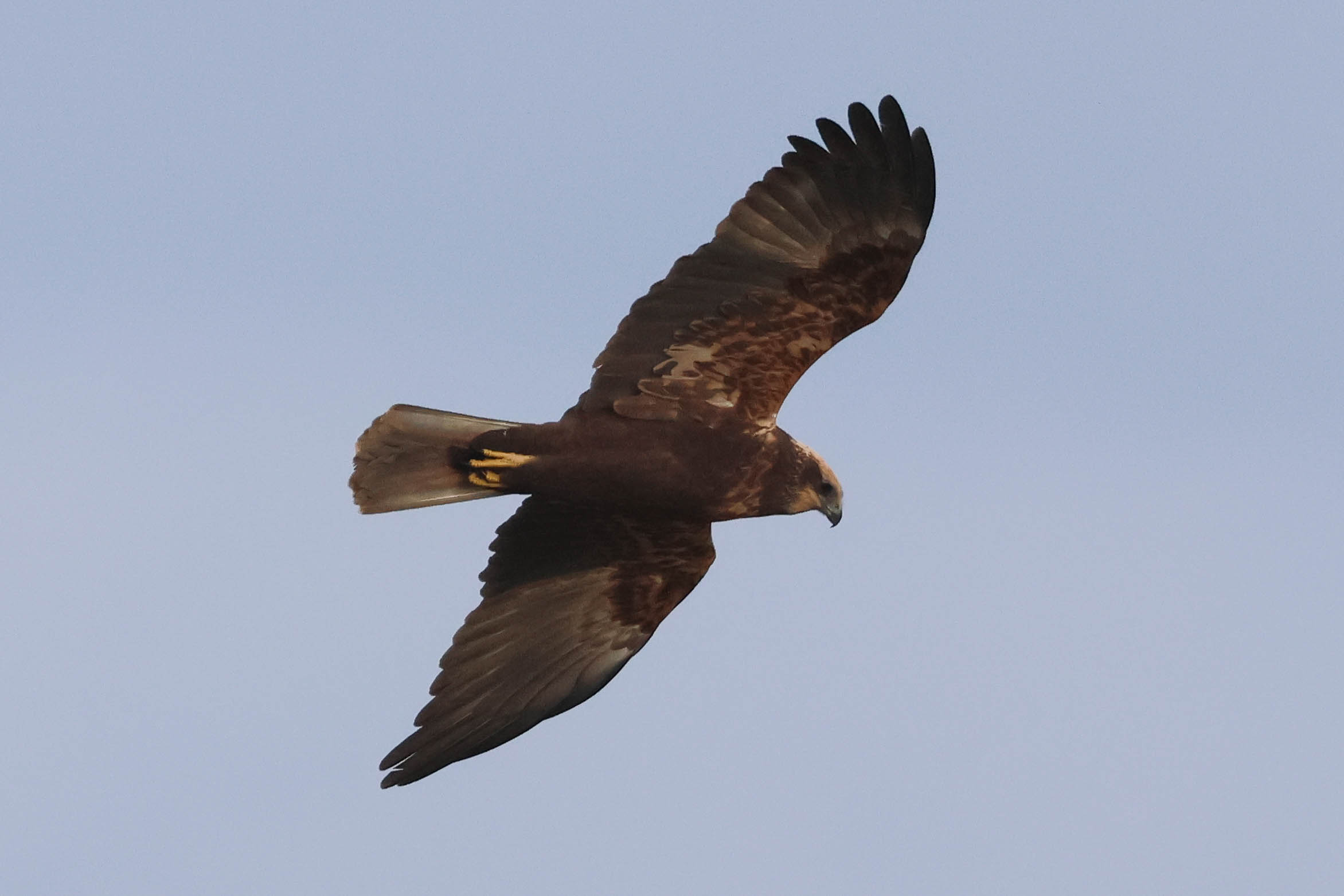
There were lots of ducks on Pat’s Pool – Teal, Shoveler and Wigeon. There were a few Avocet hanging on here too, despite the increasingly wintry weather, and lots of Lapwings on the islands. Scanning through more carefully, we found one Black-tailed Godwit, a few Dunlin and a Turnstone. Eventually, one of the Little Stints appeared from behind one of the islands further back. There have been two hanging around with the Dunlin here still recently, Little Stints are scarce birds here in winter.
This can be a good place for gulls, but there were only Black-headed Gulls here now. We could hear a Chiffchaff calling just outside the hide in the reeds and a Sparrowhawk shot past, probably too quickly to spook anything on the scrapes!
We made our way round to the middle hides next. After the recent rain, there is a lot of water on some of the other scrapes now. There were lots more ducks on Simmond’s, including several Gadwall, and we could see some small groups of Canada Geese out beyond Billy’s Wash.
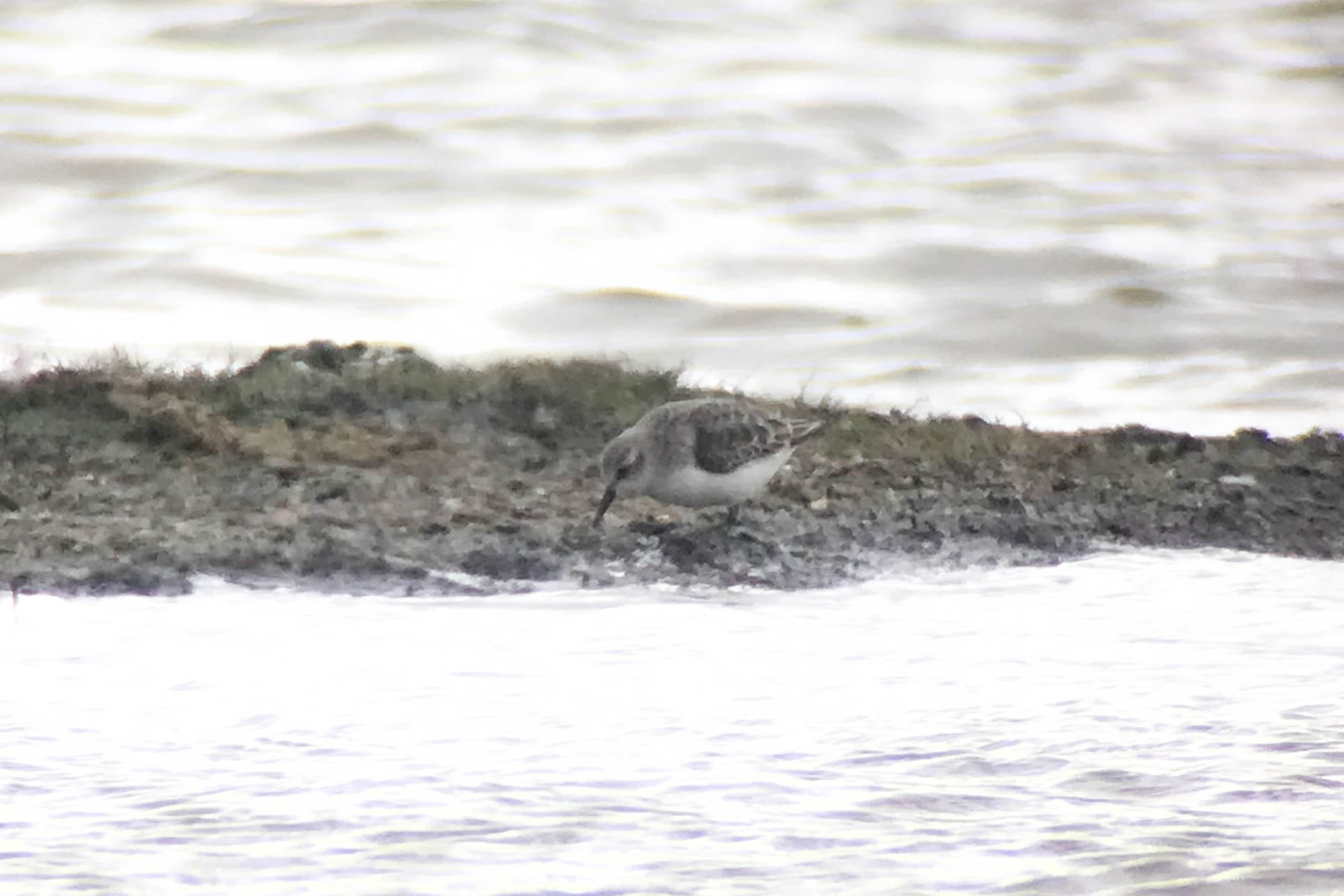
Looking out at Pat’s Pool from this side, we managed to find both the two Little Stints now and a couple of Curlew appeared.
More gulls dropped in, including several larger ones now. A young gull with a striking white head was a first winter Caspian Gull. We had a good look at it through the scopes and discussed the finer points of its identification as it preened and showed various features off to us.
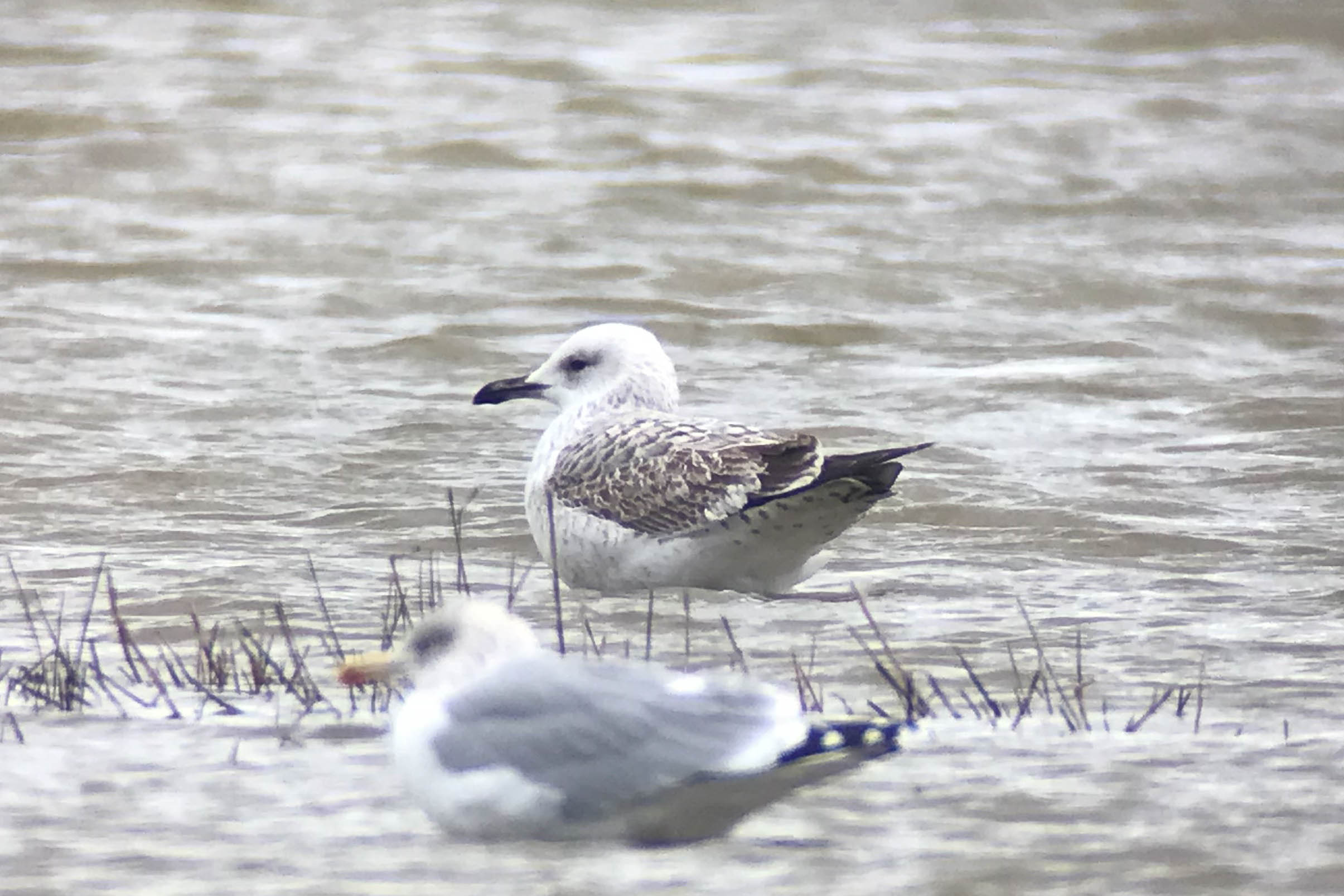
We walked back to the Visitor Centre for lunch and helpfully it even brightened up a bit so we could still make use of the picnic tables. Afterwards, we drove along to Salthouse. The Iron Road pool has more water too, so there are not so many waders on here now – just one Black-tailed Godwit on our walk out.
As we continued on over the bridge towards the beach. we saw the small flock of Twite fly round and land on the shingle in the distance. Unfortunately, before we could get there they flew off again. We scanned from the shingle ridge and saw them flying round over the grazing marshes with a few Linnets and several Skylarks too. They dropped down out of sight, then flew up and round again. This time they disappeared off east towards Salthouse.
We hoped the Twite might come back to the shingle, so while we waited we scanned the sea. They were still a few auks, Kittiwakes and Gannets moving, but they were further out than they had been this morning.
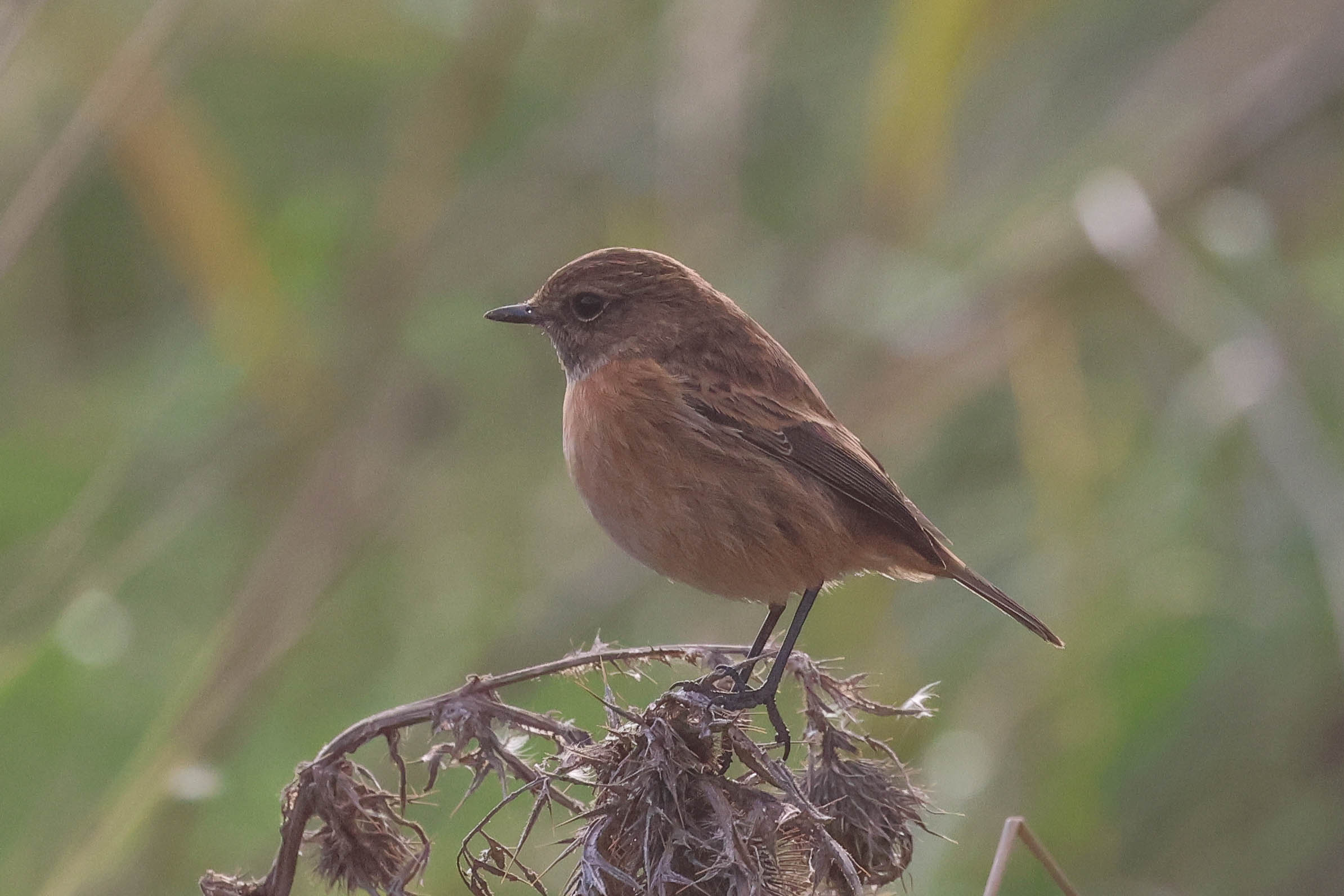
We were in danger of getting cold out here, and we had one last place we wanted to visit this afternoon, so we decided to walk back. As we set off, the Twite flew back in and round in front of us again with a few Linnets. They looked like they might land on the saltmarsh, but eventually disappeared off east again. A Stonechat flicked along Iron Road ahead of us.
As we got back to the minibus, we heard Pink-footed Geese calling and looked up to see wave upon wave of them flying in from the east, thousands of them. Possibly, the birds we had seen feeding at Weybourne earlier, we watched as they carried on west. Another impressive goose spectacle!
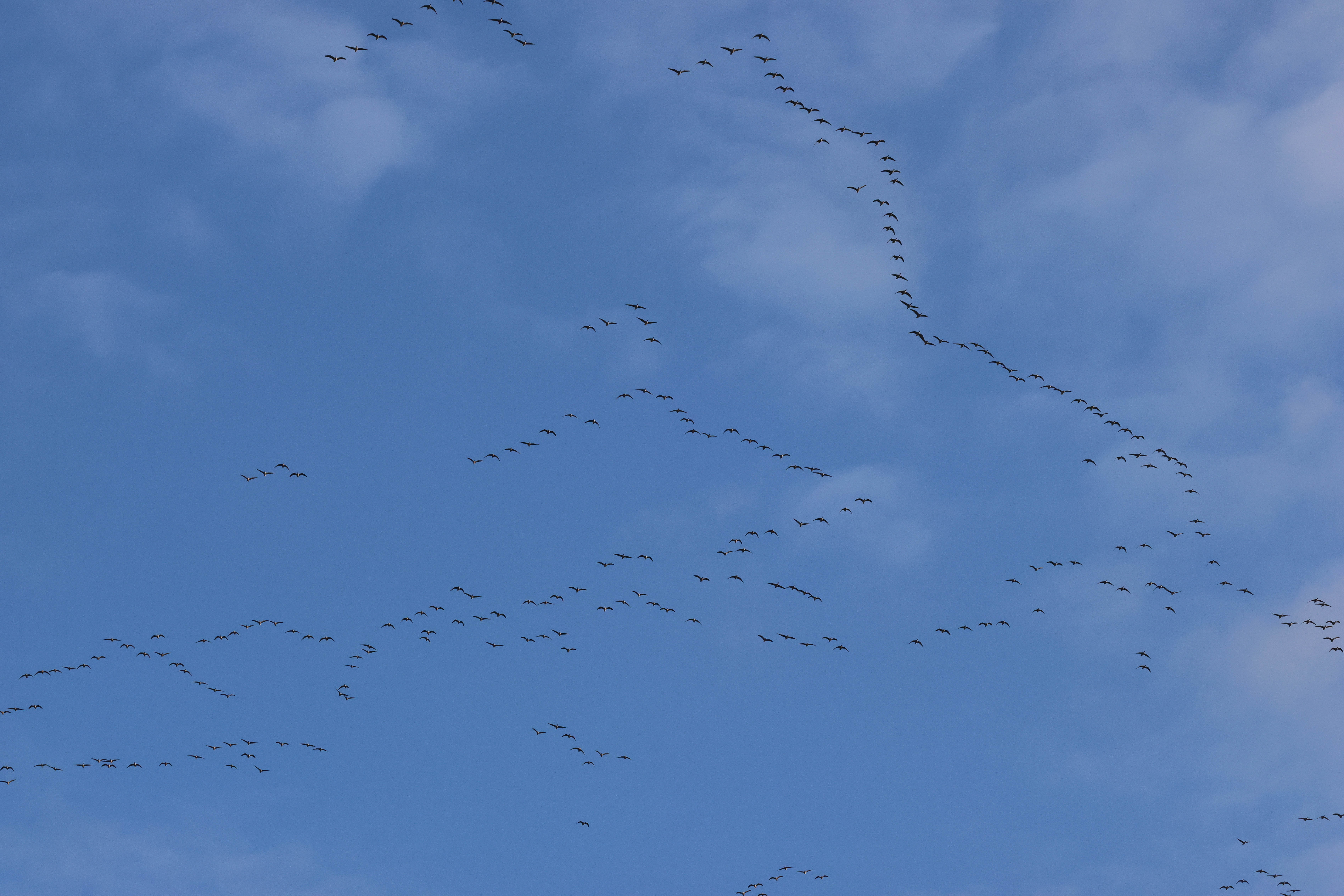
Our final destination for the afternoon was Garden Drove. As walked down the track, we stopped to admire the small flock of Brent Geese in the winter wheat.
Several Blackbirds flew out of the hedges in front and a Redwing dropped down to feed on the ground ahead of us. A Mistle Thrush flew up into the top of one of the bare trees. Down at the far end, more Blackbirds and a couple of Fieldfares flushed out of the bushes.
There were a few people already gathered on the edge of the coastal path here, so we joined them to scan. We could see several Curlews and Little Egrets and a single Great White Egret out on the saltmarsh. We were all hoping that the Pallid Harrier might put in another of its erratic appearances here, but the omens were not so good as it had not come in last night.
A rather dark juvenile Peregrine flew in over East Hills and disappeared off east. A ringtail Hen Harrier appeared briefly and distantly, going away from us, but helpfully then flew back and round over the saltmarsh in front of us, giving us good views. A grey male Hen Harrier remained more distant, over the spartina bed further back. A Common Buzzard flew past too. An excellent selection of raptors and a great return for the hour we spent here, but unsurprisingly there was no sign of the Pallid Harrier again tonight.
The light was starting to go, so we decided it was time to head back. There was a nice sunset over the fields away to the west, and then several skeins of Pink-footed Geese flew through heading out to the mudflats to roost. A great sight to end the day.
















